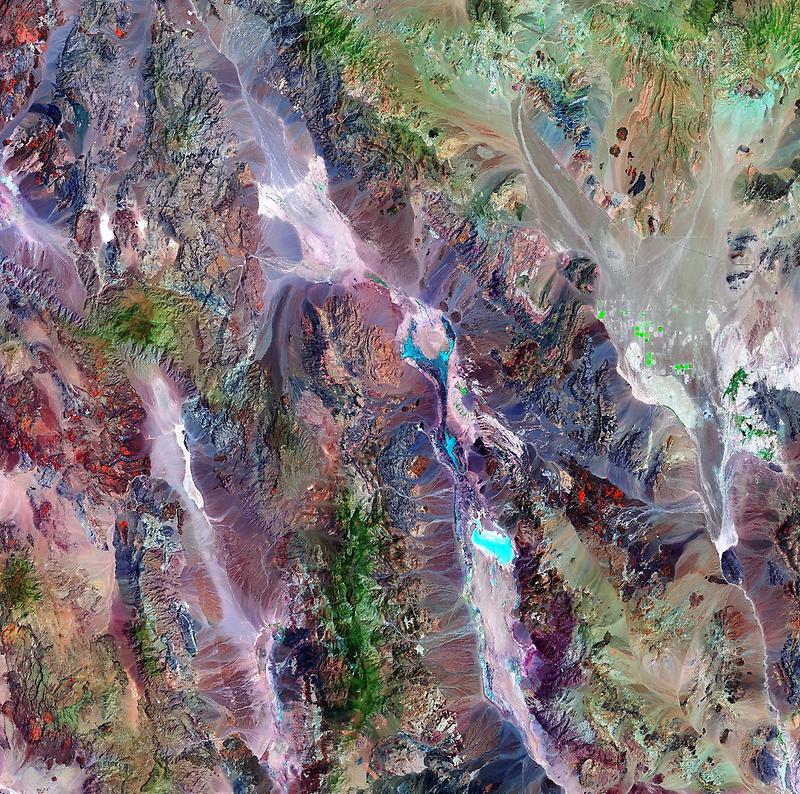Death Valley#

At night, temperatures drop considerably, and many animals in Death Valley are nocturnal as a result. Plants and animals living in this punishing environment have had to adapt to extremes of temperature and aridity. This Landsat image is compiled from observations on 11 June and 20 July 2000.
Green indicates vegetation, which increases with altitude. The peaks of Death Valley National Park sport forests of juniper and pine. The dots of brilliant green near the right edge of the image fall outside park boundaries, and probably result from irrigation.
On the floor of the valley, vegetation is sparse, yet more than 1,000 different species eke out an existence in the park. The varying shades of brown, beige, and rust indicate bare ground; the different colors result from varying mineral compositions in the rocks and dirt.
Although they appear to be pools of water, the bright blue-green patches in the scene are actually salt pans that hold only a little moisture.